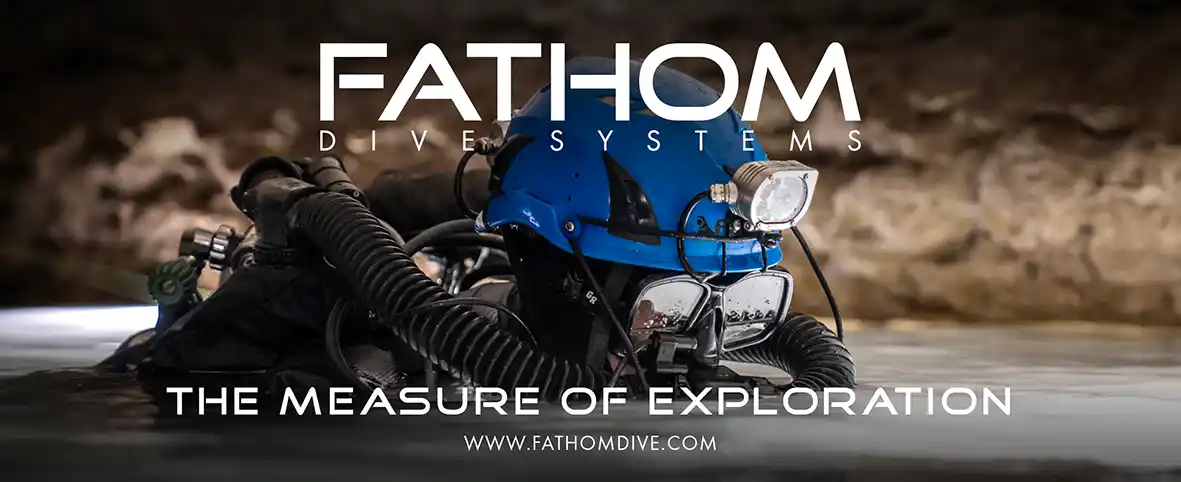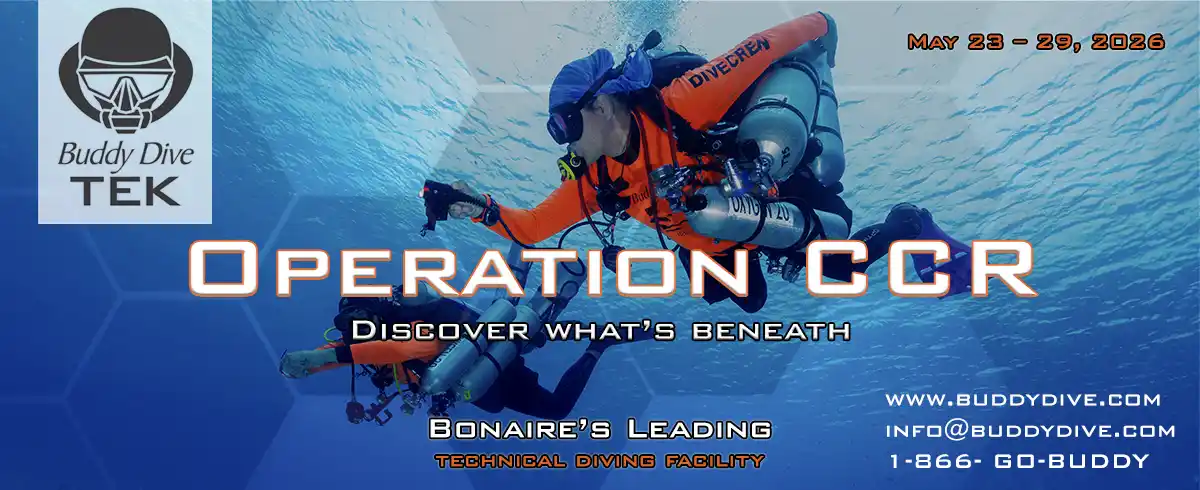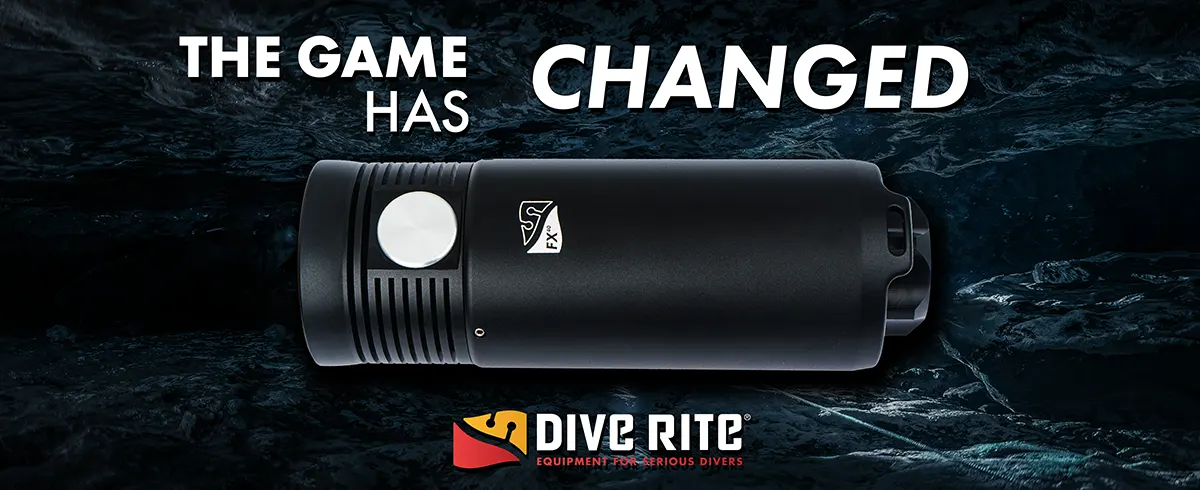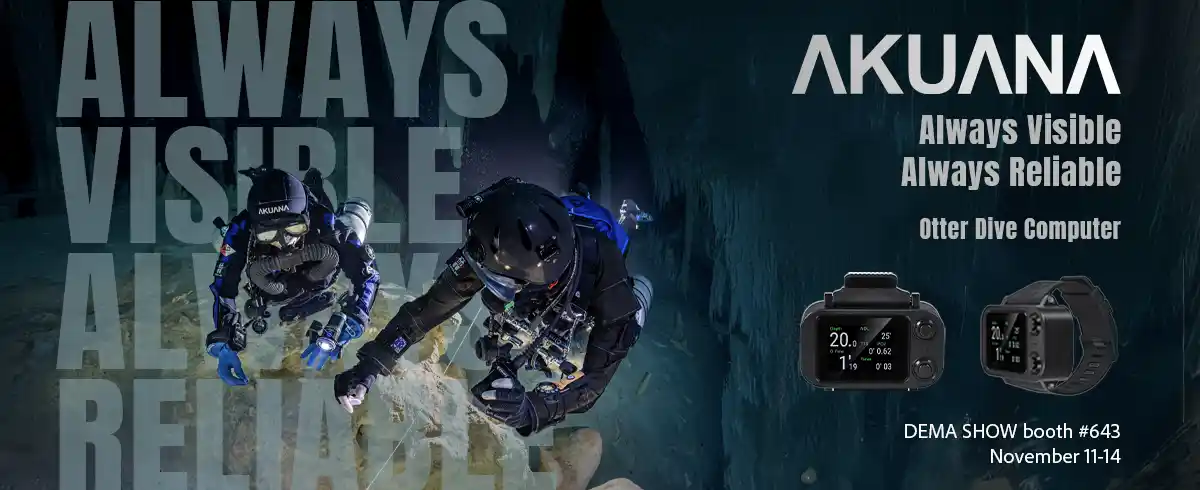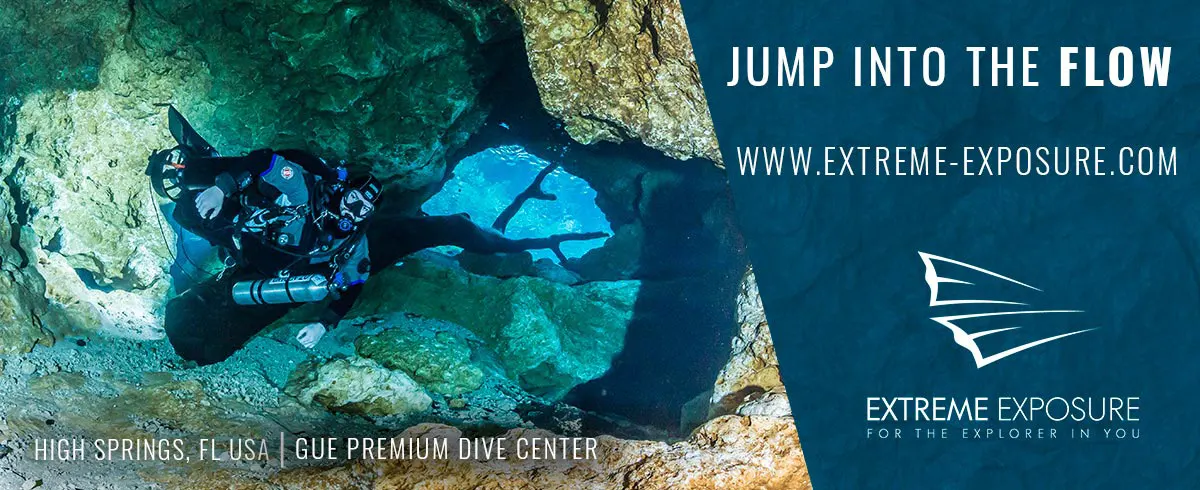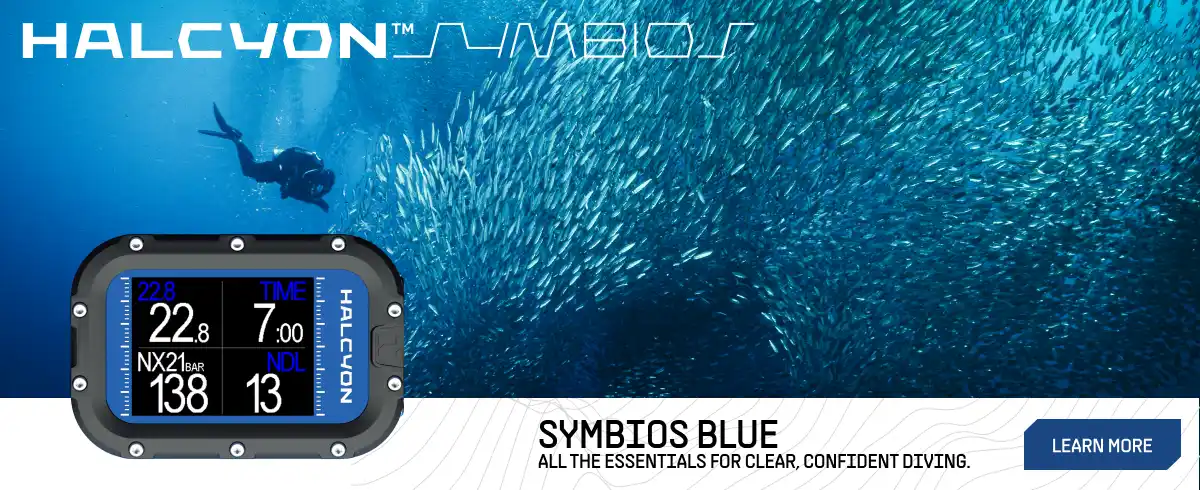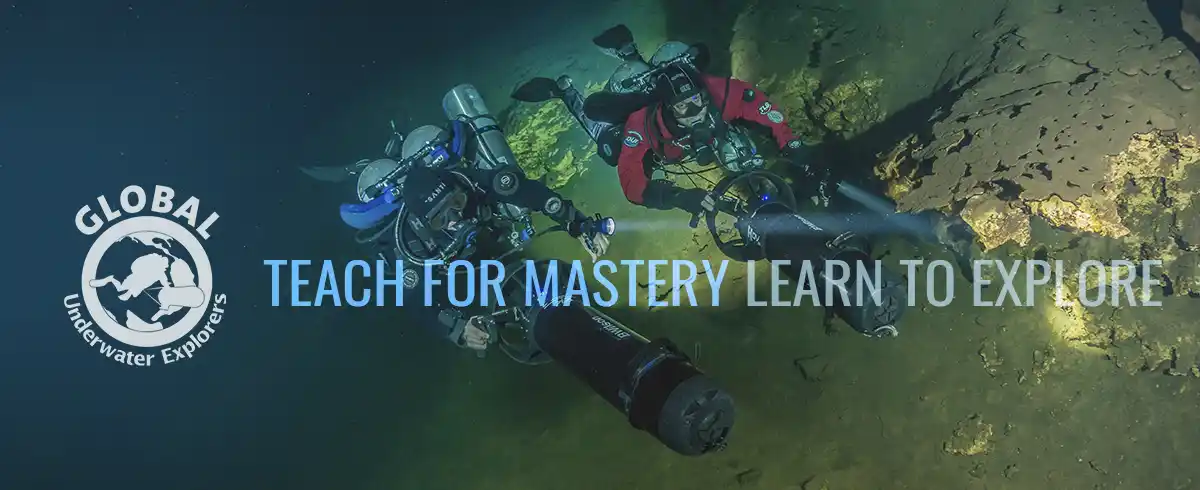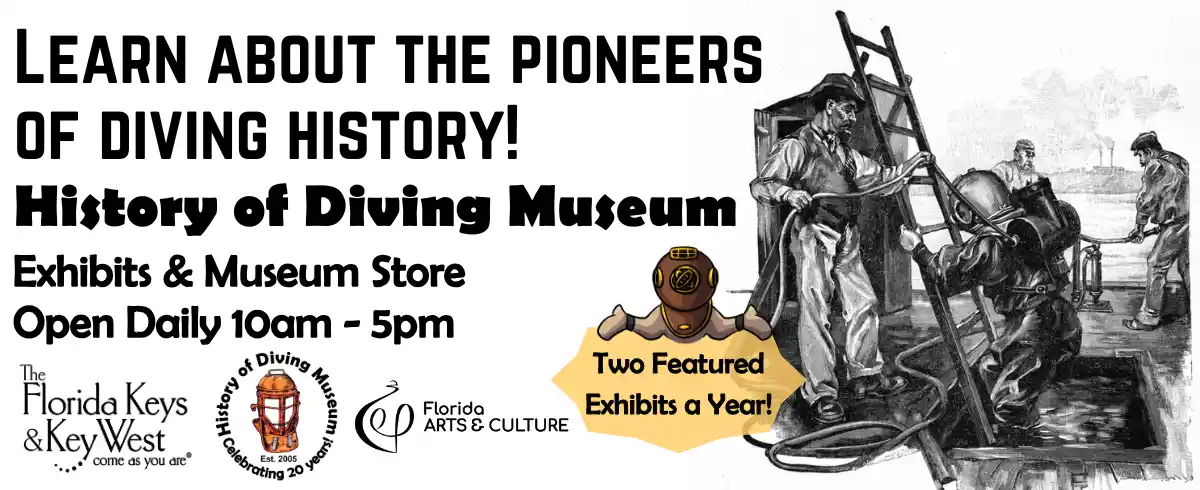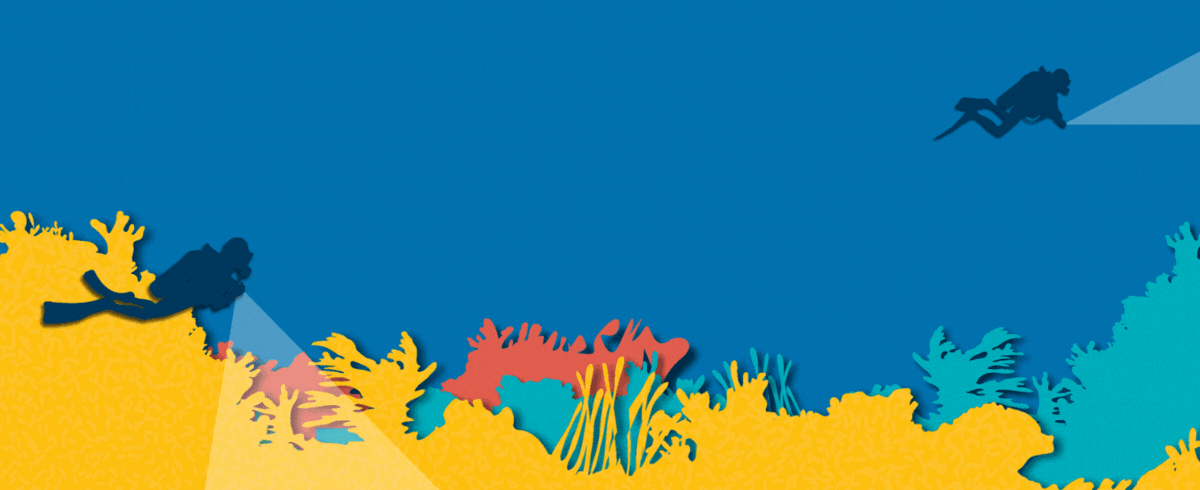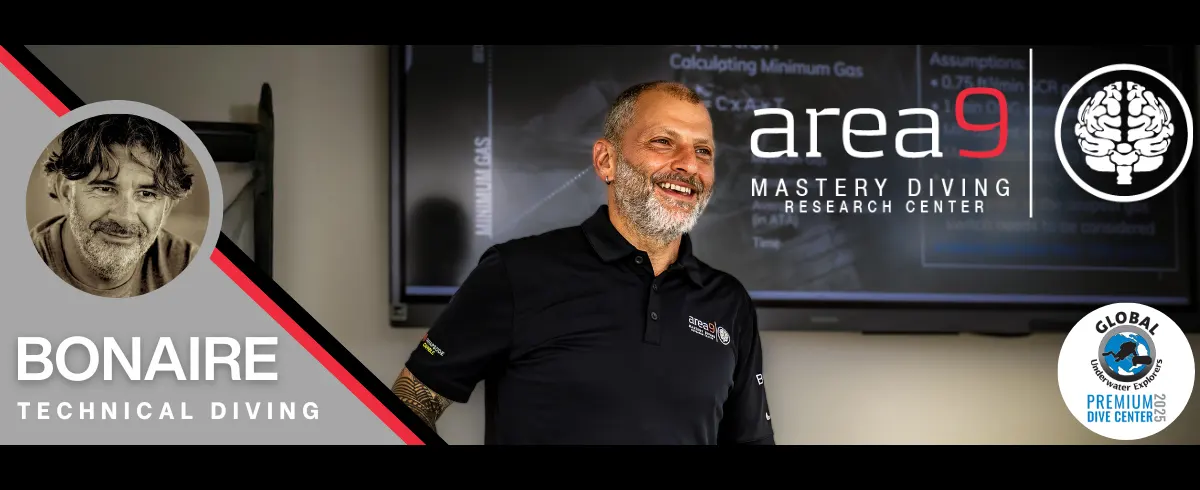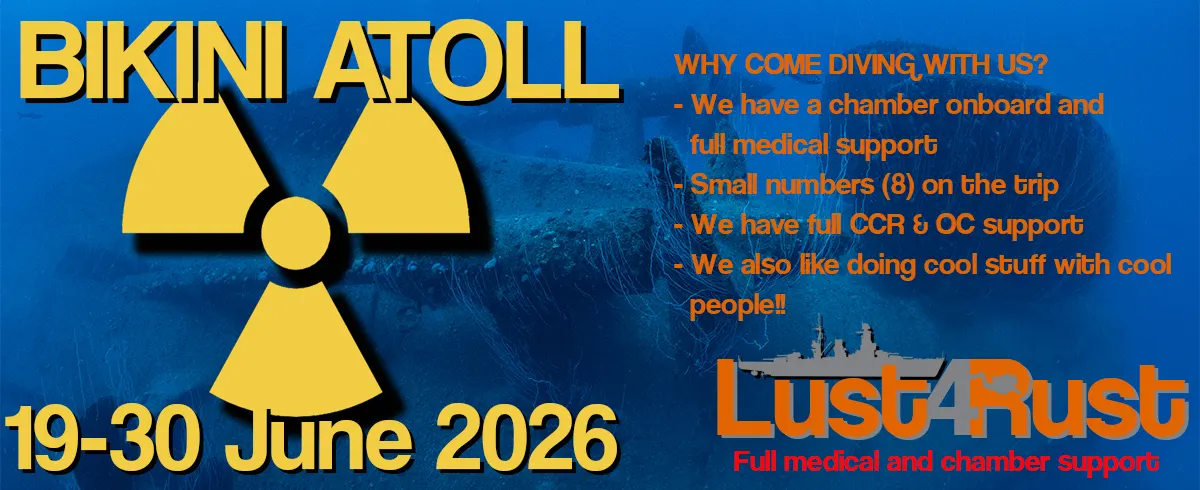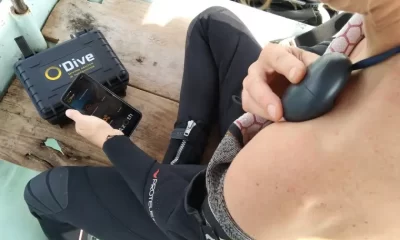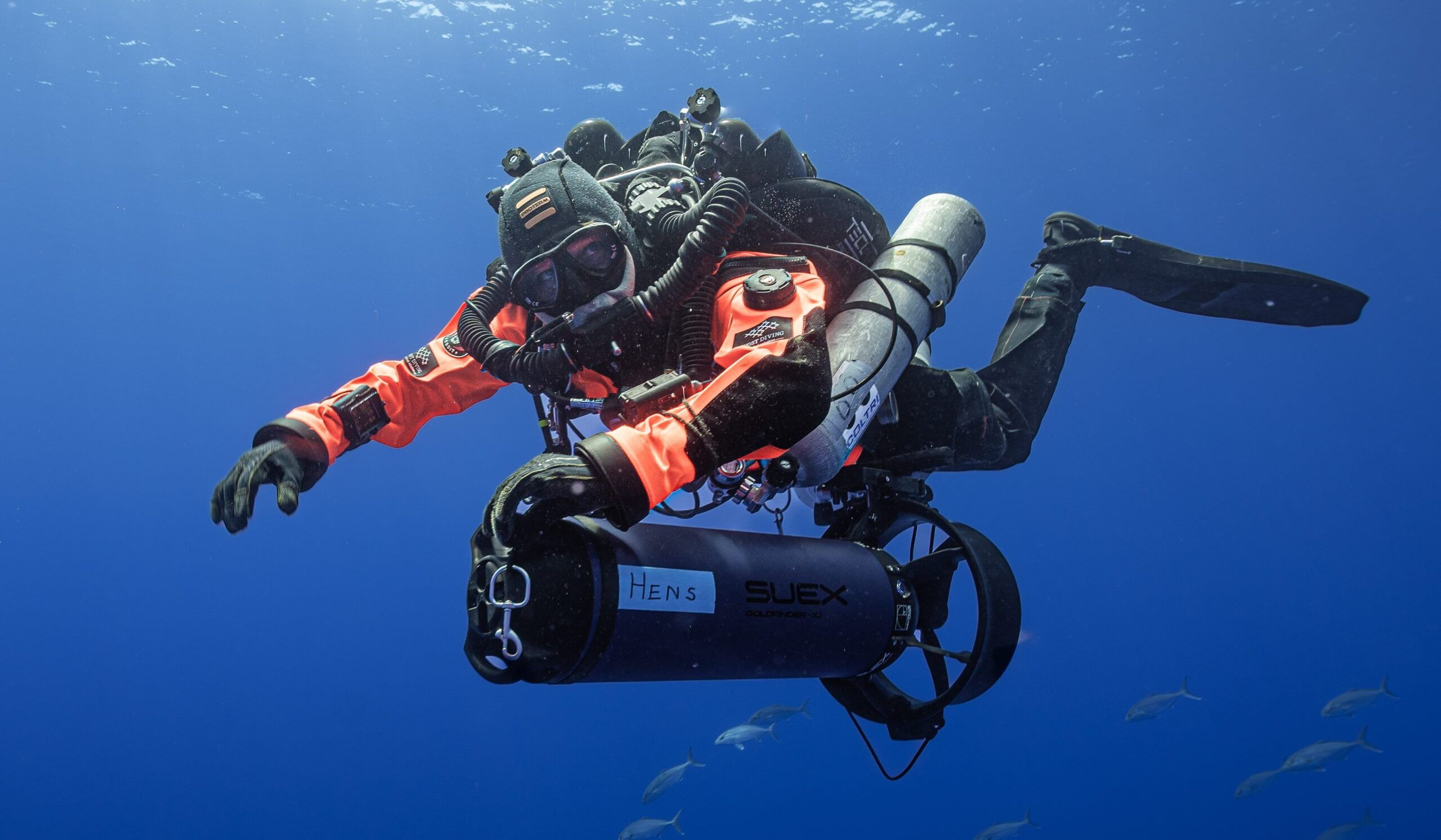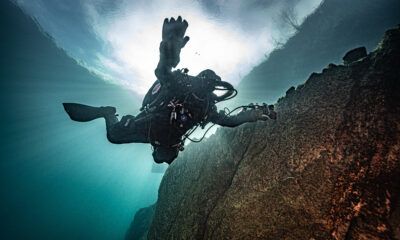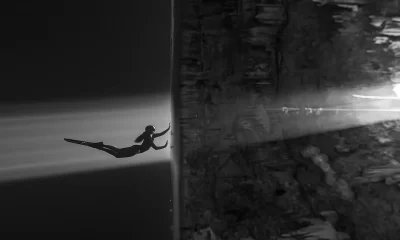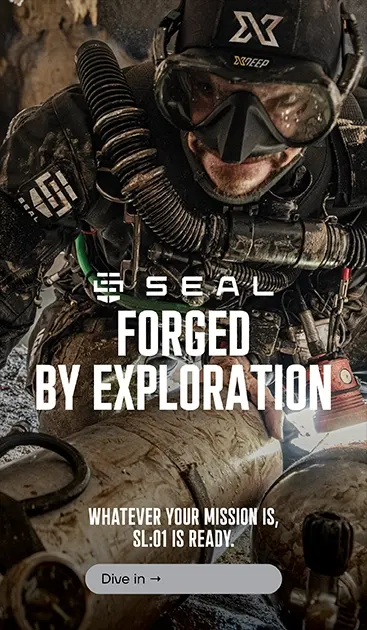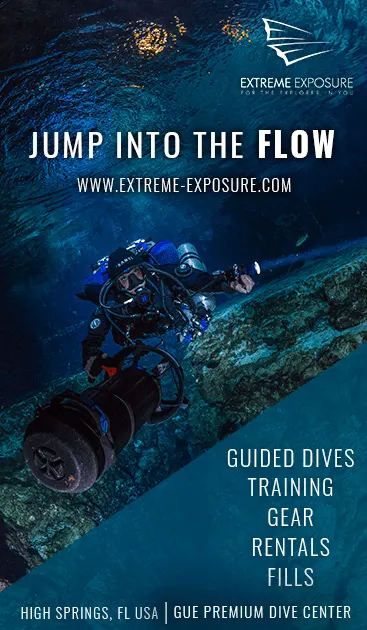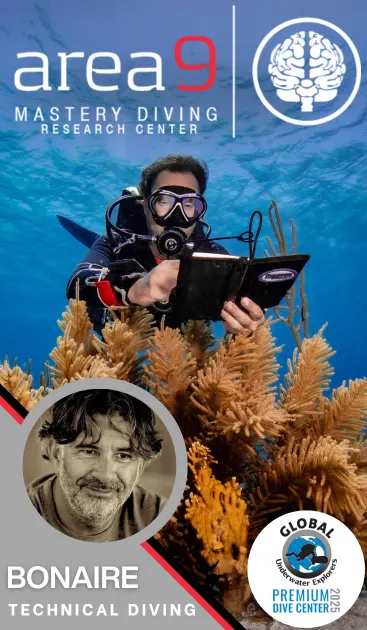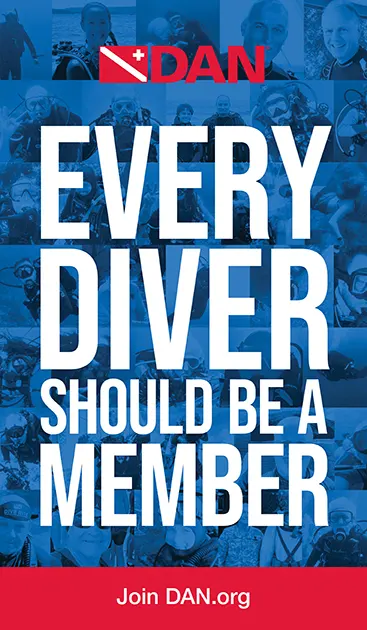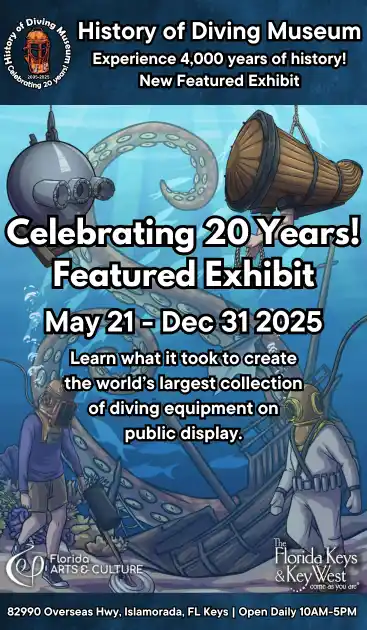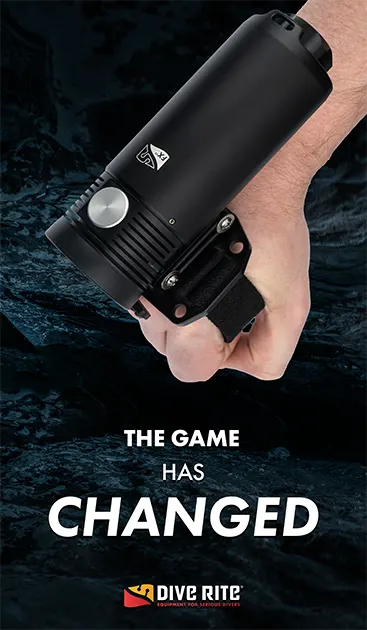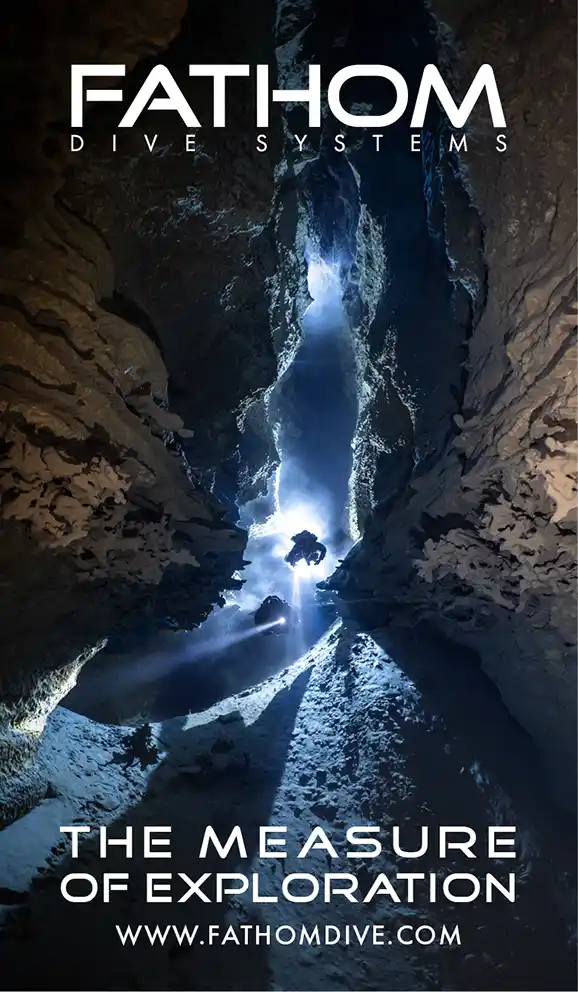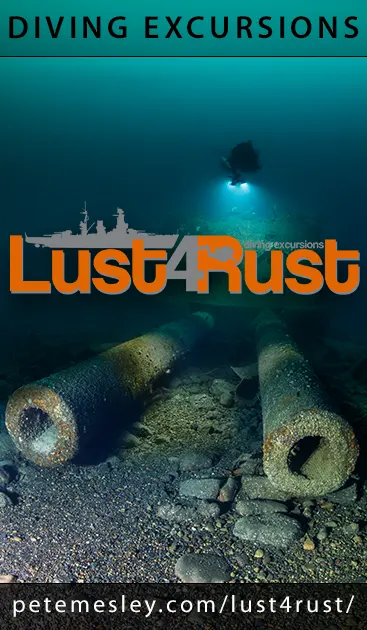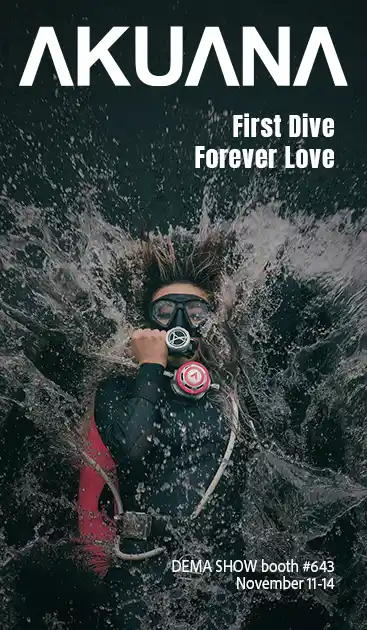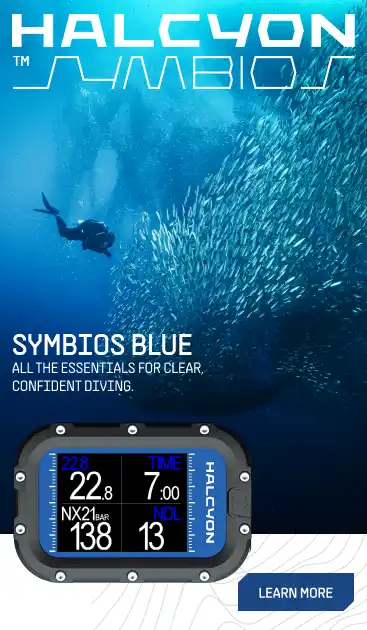Latest Features
In-Water Recompression? Easier Said Than Done!
In-water recompression (IWR) is recognized as a legitimate emergency treatment protocol for remote locations, provided that the team is trained, equipped, and prepared. But as tech instructor and medic Jeff Nance explains, In-water recompression (IWR) is recognized as a legitimate emergency treatment protocol for remote locations, provided that the team is trained, equipped, and prepared. But as tech instructor and medic Jeff Nance explains, IWR is not a panacea, and can be challenging to conduct properly.
By Jeff Nance DMT/CHT/EMT/ Master Instructor/ Technical & Trimix Instructor. Photos courtesy of the author. Graphics by SJ Alice Bennett.

In 2001, I began working for The Nature Conservancy (TNC) on Palmyra Atoll as Dive Master, Medic, and Diving Safety Officer (DSO). At that time, TNC had just purchased the Atoll to protect it from the two other interested parties: an international consortium that wanted to build a nuclear waste dump there and a huge commercial fishery. In order to save the Atoll from either of those fates, the Fullard-Leo family sold it to TNC for half of what the other parties were offering.
From a logistics perspective, I immediately recognized just how remote Palmyra Atoll was (picture Gilligan’s Island on steroids) and how problematic that could be in an emergency. Consequently, because TNC didn’t have an Emergency Action Plan (EAP) in place, I made that task my first priority.
First, because of my decade of experience as a technical diver and instructor, I was certainly aware of in-water recompression (IWR), but I began researching the subject in earnest as a possible treatment plan for injured divers. However, the more I learned, the greater my concern grew regarding the myriad of potential hazards which, in addition to our remote location, included limited access to O2, inadequate equipment to deliver it at depth, and the disturbing fact that Palmyra is a shark-rich environment.
Consequently, I ruled out IWR at that point and focused on dive safety within the constraints of this locale, which were considerable. There was a WWII-era coral runway which was only accessible during daylight by Coast Guard C-130 from Honolulu. A daytime medivac would have been potentially very difficult, and a night evacuation impossible. So, we extended safety stops and surface intervals, capped the max depth at 295 m/90 ft, and performed all diving activities early in the day.
Through my position with TNC, I began to get additional jobs on expeditions throughout the mid-Pacific area. Then I contracted with BBC for a job—one that required being equipped for and practiced at IWR—and that involved diving on Palmyra and Kingman Reef.

Preparing to Conduct IWR
The entire BBC crew, including the director and cinematographer, flew to Palmyra and met us and the boat (the M/V Searcher).
We set up and practiced IWR at the dock on Palmyra. The equipment we had procured was a 18 m/60 ft O2-serviced LP hose, an O2-serviced AGA mask, a dozen bank bottles with 100% O2 and a weighted beach chair.
We left behind the relatively controlled environment of the lagoon at Palmyra to make the 48-64 km/30-40 mile trip to Kingman Reef, and there we set up for an afternoon of IWR practice.
I should note that, while Palmyra is as remote as it gets, Kingman is light years away in terms of an EAP. Any evacuation would have required a three-to-four-hour boat trip back to Palmyra and a medivac from there by Coast Guard C-130: a 1,609 km/1,000-mile flight each from Hawaii, hence the BBC requirement to be equipped and ready for performing IWR.
We recognized numerous logistical issues at this point. First, even anchored in the lee of the reef on a 37 m/120 ft vessel, the boat would swing in the wind, making it virtually impossible to maintain depth (even in our weighted chair apparatus).
Secondly, like Palmyra, Kingman is a very shark-rich environment. This wouldn’t be a problem during normal diving operations, but hanging out in the chair could be risky if we had to treat someone after dark.
I will note that, at this point, having studied the few available IWR treatment tables, the Dr. Carl Edmonds (Australian table) was clearly the treatment table to use. Despite the fact that I was working with Frank Farm, one of the pioneers of the Hawaiian tables at the University of Hawaii Hyperbaric Treatment Center, I clearly recognized the advantages of the Edmunds treatment tables (TTs).
Primarily, the Edmunds TTs have a max depth of 9 m/30 ft on 100% O2, the advantage being that you can remove the patient at any time with minimal risk of making the patient worse.
In contrast, the Hawaiian method calls for a deep spike on air. One of the obvious issues is that the patient is on-gassing more nitrogen; so, if you have to abort the treatment, there is increased risk to the patient. There is also the difficulty of monitoring the patient and the risk of DCS to anyone attending to the patient.

A primary question weighed on me: At what level of patient acuity do we consider attempting IWR? I used any downtime I had to practice and adjust the gear.
Putting Our Prep into Practice
About eight months later, I was on an expedition in the Gulf of Thailand to identify the shipwreck Tottori Maru, which was sunk by the USS Hammerhead near the end of WWII. Max depth to the bottom was 82 m/270 ft, but the majority of diving took place at a max of 73 m/240 ft. Toward the end of WWII, the US had adopted “Wolf Pack” submarine tactics and were sinking Japanese shipping in what was then called The Gulf of Siam.
The Tottori Maru was a Scottish-built freighter that had been owned by the NYK line before the war before it was commandeered by the Imperial Navy.
It had the dubious history of hauling British, American, and Australian POWs to Japan from the Gulf of Thailand to work as slave labor. Many died enroute to Japan. At the time she was sunk by the USS Hammerhead, she was carrying coal as part of a fleet that was hauling resources (including coal and rubber) plundered from Thailand, Burma (now Myanmar), and Cambodia back to Japan to supply their war machine.
My friends had devoted their time and resources to searching through records and then finding these wrecks, and one of my first observations upon mooring up to the wreck was the hang/deco apparatus on my friends’ 34 m/110 ft boat. They had developed a device that maintained depth no matter what the seas and or wind were doing. It had hang bars at 3, 6 and 9 m/10, 20, and 30 ft and a hookah system that delivered O2 from a bank of cylinders.
Upon seeing this system, I immediately thought that it was what I needed for the BBC shoot. I told the team about IWR and the situation at Kingman Reef, and IWR became a hot topic of conversation during surface intervals.

Then, midway through a 10-day mission, one of the divers developed wrist pain during decompression at the 21 m/70 ft stop. He didn’t think too much about it, so he continued with a conservative deco schedule. But when he surfaced, it started getting worse and, within five minutes, the pain progressed to his elbow. I began monitoring him and had him hydrating as a precaution. After five more minutes, it involved the shoulder as well, and there was visible lymphedema on the wrist.
We were 12 hours from Koh Samui by boat, the diver was A&Ox4 (Awake, Alert & Oriented x 4 refers to someone who is alert and oriented to person, place, time, and event) and although, at face value, it sounds like a Type 1, pain-only hit, since it occurred during decompression, it would be considered a Type 2 DCS hit.
After discussing the options, I opted to perform IWR with a modified Edmonds table (max depth 6 m/20 ft as opposed to 9 m/30 ft) because no full face mask was available—which resulted in a max PO2 of 1.6. The stops were the same duration (30 to 90 minutes depending on symptom resolution), and travel times were the same (12 minutes per meter).
After 45 minutes at 6 m, he ascended to 3 m/10 ft for another 45 minutes. He was indicating that the pain in the shoulder and elbow were gone, and the wrist was better, although it was very difficult to communicate his progress under water. With only OK signs and writing on a slate, it is virtually impossible to perform any kind of comprehensive neurological exam.
Once he completed the ascent to the surface, he sat on the surface breathing O2 for a while. Only a little wrist pain remained and some edema in the wrist, but the whole cascade into serious DCS was curtailed.
Now, this may sound like a plug for IWR, but it was just one minor success under ideal circumstances. Nevertheless, my friends that own this vessel were on a similar expedition about a year later, and a different diver took a more significant DCS insult. They tried to put him in the water, but he was quickly losing control over his legs and arms. They never got him under water, and I believe he aspirated some water, further complicating his situation.

Caveats & Alternatives?
I also need to raise the question that if the diver I treated in Thailand had received surface O2 only, what would the outcome have been? Because, as a DMT at the UH Hyperbaric Treatment Center, I have seen quite a number of injured divers over the past 18 years that had significant DCS immediately post dive, but received surface O2 immediately and were asymptomatic by the time they got to us. (We still treat them, of course.)
This is an issue with the IWR case reports I have reviewed: there is no way of knowing what the outcome would have been with surface O2. And there are cases where two divers got in for IWR and had a favorable outcome, but their buddy who got taken by medivac but died en route to the chamber, left more questions than answers. For example, just because they did the same dive doesn’t mean they had the same level of DCS, and were there any comorbidities with the diver that had a worse outcome? Did they have a PFO?
One of the other primary reasons I discourage EAP’s that rely on IWR to treat DCI is that, even if you train people to perform IWR, unless they have extensive medical training (and, more importantly experience), you run the very real risk of misdiagnosing patients. For example, we were called in to treat a patient with severe neurological symptoms; the referring facility was convinced it was DCS. Our attending physician insisted on an MRI before receiving this patient, and it turned out he had a dissected carotid artery.
In a similar case in another facility, a diver’s buddies brought him to an ER and were very upset when the facility did a workup instead of just treating him in the chamber. The workup revealed a hemorrhagic stroke.
So, any team planning on IWR as part of their EAP needs to have someone capable of differentiating diagnosis.
My Conclusions
From experience and extensive review of case reports, I have come to the conclusion that IWR shouldn’t be the go-to plan for EAPs as there are too many variables, patient acuity being the primary variable. There can always be a patient that is too sick to go back in the water. In that case, attempting to do so could cause more harm than good.
Not to mention the usual concerns about IWR: O2 toxicity is one (which, even with a full face mask, could present a multitude of problems). Communication is another issue, as mentioned in the above text, as well as thermal regulation and hydration. In almost every case, it is better to simplify the EAP to include surface O2, IV fluids and medivac ASAP.
Now, if I were asked to do another expedition to one of these amazing remote locations if the contract required IWR readiness, the answer might be “yes,” but with some caveats.
For example, I would require the whole team to practice prior to departure, and then again on site—including practicing O2 toxicity simulations and recovering a diver whose condition deteriorated underwater and communication practice. In addition to this, I’d insist that the team review medivac procedures, contacts, and closest hyperbaric chamber availability.
Without all parties, including the patient, having studied and practiced IWR, it would be a dangerous endeavor. I’m imagining a tourist-oriented dive company attempting IWR with an entry level diver, which I have heard of in the past, as well as more experienced divers just “winging it.”
“At the risk of beating a dead metaphor, I see relying on IWR for an Emergency Action Plan is like the old aphorism, “If all you have is a hammer, then all you see is nails”
At the risk of beating a dead metaphor, I see relying on IWR for an EAP is like the old aphorism, “If all you have is a hammer, then all you see is nails. ”How does IWR work anyway, if the injured diver is only going to 6-9 m/20-30 ft? The key to IWR’s effectiveness is minimizing any delay to treatment—and that it is more about utilizing O2 and less about Boyle’s law.
Traditionally, it was assumed that recompression therapy was a mechanical process of crushing the bubbles utilizing Boyle’s Law, but it is more about using O2 under pressure and applying Henry’s and Dalton’s laws to create isobaric counter diffusion to displace the N2 in the bubbles with O2, which allows the bubbles to be absorbed by the body.

In fact, although the volume of bubbles changes proportionally according to Boyle’s Law, the diameter does not. Bubbles don’t even reach half their diameter until they reach a depth of 10 ATA/297 ft.
This is also, in large part, why more and more hyperbaric facilities treat DCS/AGE at 18 m/60 ft or 2.8 ATA and are not doing 50 m/165 ft (or deeper) spikes on air anymore.
With all of this said, the synopsis is, if a patient is well enough to go in the water, they will probably do OK with just surface O2, fluids, and Medivac. But if a patient is so sick that they need immediate treatment, they are probably not a good candidate for going back underwater for IWR.
DIVE DEEPER
Diving & Hyperbaric Medicine: In-water Recompression by DJ Doolette and SJ Mitchell
aquaCORPS: In-Water Oxygen recompression: A Potential Field Treatment Option for Technical Divers by Carl Edmonds (1993)
aquaCORPS: The Case for In-Water Recompression by Richard L Pyle & David A. Youngblood (1995)
Undersea Hyperbaric Medical Society: In-Water Recompression, Proceedings of the 48th UHMS workshop, MAY 1998

Jeff Nance, originally from Santa Barbara and now residing in Hawaii, has logged over 10,000 dives including 1,500+ technical dives with depths ranging from 150-330 ft. He has served on the Board of Directors for the National Board of Diver and Hyperbaric Medical Technicians, as well as currently serving as a Divers Alert Network Hotline Medic. He worked on a number of films as Safety Diver and DSO including the New Line Cinema production “After The Sunset,” The Discovery Channel shoots for “Ways to Save The Planet,” and various other films including the BBC documentary “Wild Pacific,” shot on location at Kingman Reef and Palmyra Atoll, as well as contributing to a National Geographic Article on Kingman Reef. His certifications include: NAUI instructor and Technical Diver, SSI Dive Control Specialist Instructor, PADI Master Instructor, Technical and Tri Mix Instructor, an EMT, DMT, CHT, and certified in ACLS, AMLS, and PHTILS.


